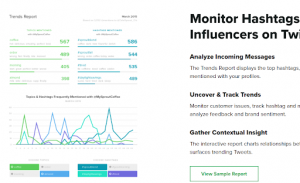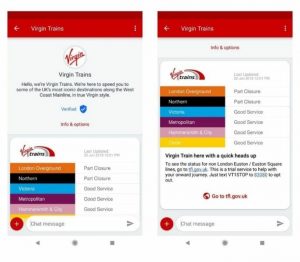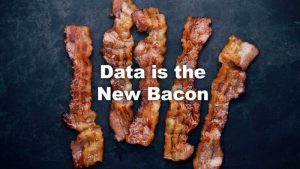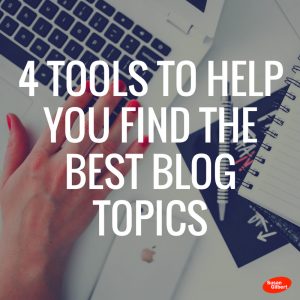Having an AdWords campaign not panning out as intended is a common experience. Not to downplay this situation, it sucks… but it happens.
What do you do when you’re not getting the conversions you want? Well, I’ve been a part of several reconstructive PPC projects and hopefully, I can help you get back on track. At the very least, even if this article doesn’t solve all of your issues, using it should uncover trends that you can use to make better-informed decisions.
As a quick note, this article can also be used for brand new campaigns. So, if you don’t have any data yet to guide your strategies this article can help you gather a lot of information in an organized and scalable method. You can then use this information to create new ad groups, keyword lists and landing pages for those ad groups, and advertising copy.
To illustrate how this method works, I’m going to use a fictional business as an example. This business specializes in home repairs, and they want to launch a PPC campaign focused on increasing leads for their swimming pool repairs service line.
Quick Review of How AdWords Search Network Ad Groups are Built
To get a good idea of how an ad group is set up I added a flow chart below.
Notice how an ad group will contain a keyword list. In this list, there are different terms that can either be different words or the same word with different match types.
These keywords trigger advertisements when someone searches a query that matches them. Whether or not there’s a match depends on the match types and keywords used in this list.
Lastly, each of these advertisements has a link to a landing page.
Now, each of these parts of the flow chart carries significance in your quality score. The three attributes that determine quality score are:
- Expected clickthrough rate
- Ad relevance
- Landing page experience
Why is quality score important?
Quality score is one of 3 elements that determine where on a Google results page your ad will be placed (up at the top of page one, or somewhere at the bottom of page two). It stands to reason that this placement will probably impact whether someone’s going to click on your ad or not.
The three elements that determine ad rank are:
- Quality score
- Bid amount
- Ad extensions (site link extensions, call extensions, etc)
Here’s a video that explains how advertisers can use these three elements to increase their ad rank without having to increase their bid. For sake of keeping this article from turning into a content offer, I’m just going to summarize the key takeaway for our purposes.
By using ad extensions and increasing your quality score you can potentially make your ads rank better while bidding less. Thereby increasing your ROAS.
Okay great, now let me show you how to get your quality scores from this…

To this.

Focus on One Keyword in Each Ad Group
As a reminder, we’re working with a business that specializes in home repairs. They want to use AdWords to promote their swimming pool repairs service line.
We learn that this client’s service line Swimming Pool Repairs is pretty heavy construction. Unlike regular maintenance, this service line usually requires emptying the entire pool and sometimes overhauling most of its layout. Through some light keyword research, we find that this type of service is usually described as “pool remodeling”, “pool liner repair”, or “pool renovations”.
To keep our ad groups laser focused we create one called “pool remodeling”, another one that’s “pool liner repair”, and finally one called “pool renovations”.
The next few steps are identical for each ad group, so I’m going to go over it once in this article, and you would simply repeat them for the other two ad groups
For the ad group “pool remodeling” we’re going add the following keywords:
- “pool remodeling”
- [pool remodeling]
- +pool +remodeling
I recommend using those three keywords, you can also use pool remodeling as a broad match keyword. Make sure to pay attention to you ad relevance, landing page experience, and regularly monitor your Search Terms for irrelevant queries and add them to your negative keywords.
Build a Landing Page Specifically for this Ad Group
If you can use the URL https://domain.com/pool-remodeling that would be ideal, otherwise use something as close as you can. I like having a subdomain just for PPC as it gives me more freedom with my URL structure. For example https://offers.domain.com/pool-remodeling.
On this landing page fill in the following elements:
- Set the page title to include the keyword pool remodeling, for example:
<title>Pool Remodeling: Get Unlimited Free Estimates from Our Experts</title>
- Set the header on the page to include the keyword pool remodeling too, for example:
<h2>Pool Remodeling: Price Quotes from IICRC Licensed Experts</h2>
- Include the keyword in the page paragraph content and in the meta description
- Use relevant images and include the keyword in the image alternative text and image title tag.
Pro tip: Use a high resolution before and after image with the alternative text and title text: Pool remodeling: before and after IICRC expert refurbishing.
Place a form on this page with only the minimum required fields and title it Get Your Free Pool Remodeling Quote.
If you have a video testimonial with high-quality footage of the pool remodeling process you can add it to this page to entice the visitor to fill out the form.
Lastly, set this form submission to redirect to a thank you page, I prefer using one thank you page for all of the landing pages I’ll need for this campaign. I might make it something like https://offers.domain.com/pool-services-quote/thank-you. I would then make a conversion tracking code in AdWords and add it to my Google Tag Manger to fire on the URL that starts with https://offers.domain.com/pool-services-quote/thank-you.
By matching all of these elements to the ad group’s focus keyword you should see a dramatic increase in landing page experience.
Match Advertisement Language to the Landing page
It’s very important that the keyword is included on the first line of the advertisement. Also, include it in the display URL and match the description and second headline to different elements on your landing page.

By using strong calls to action and language that’s similar to your ad group’s keyword you should see a dramatic increase in ad relevance. It’s a good idea to make a few ad variations that follow these basic principles to identify the language that resonates with searchers the most.
Your goal should be to get as high of an expected click-through rate as possible as that’s a very significant element in determining quality scores. In addition to action-oriented language, you can use ad extensions to increase the expected click-through rate.
Use Ad Extensions to Increase Click-Through Rate
The extensions you choose to use are going to depend on your industry and goals.
I recommend setting up as many ad extensions at an ad group level as possible. Based on how we’ve set up our ad groups, using extensions this way will help us stay hyper-focused on the searcher’s query.
Here’s what I’m going to use for our example:
- Sitelinks extension: Complete Service Catalog, Certifications, and Awards, Pool Remodeling Services, Pool Service Locations (I’ll link these to their respective pages)
- Callout extension: Free Quote, IICRC Certified, Insurance Accepted
- Structured snippet extension: Service Catalog: Concrete Resurfacing, Liner Repairs, Retile and Tile Repairs, Plaster Renovations
- Call extensions: I prefer using a tracking number that forwards to a salesperson
- Message extensions: Again, I prefer using a tracking number that forwards to a salesperson
- Location extensions: Use the same location as the campaign to leverage Google Map Ads.
By using ad extensions you should see an increase in expected click-through rate. This element of the quality score is a little more complicated than the other two, and improving it might require some creative tactics.
Here are a couple other things you can do to increase it:
- Target your campaigns by geography
- Set up ad schedules to show ads during peak times of day and days of week
- Use bid adjustments for devices with higher click-through rate
From Here Adjust Incrementally to Support a Winning Strategy
What we have here is a pretty rock solid start that will have a significant impact on an AdWords campaign gone wrong, or to jump start an initial AdWords strategy.
Keep an eye on clicks and conversions by keyword, ad group, search terms, advertisements, and encourage elements that are performing well while limiting (or removing) ones that aren’t.
Happy Advertising, everyone!
Digital & Social Articles on Business 2 Community(58)







